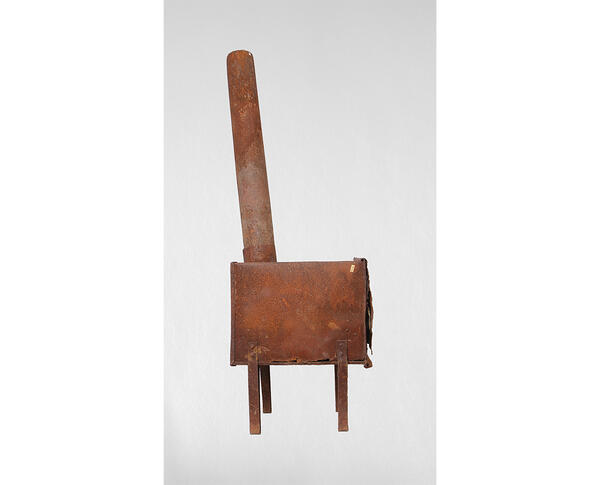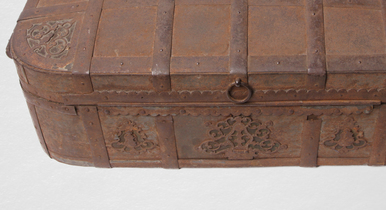In the last century, rooms were heated with small cast-iron stoves. They were often used for cooking as well. This type of stove replaced fireplaces and became very popular in the first half of the 20th century, but practically fell out of common usage with the development of central heating and the introduction of gas stoves.
The country of origin of the cast-iron stove is considered to be England. In the 19th century, English steelworkers proposed such stoves as a solution to the heating problem. When the demand for cast-iron stoves increased, they came into serial production. Cast-iron stoves were usually made of cast iron, they rested on four legs and were more compact and cheaper compared to fireplaces. The first models were decorated with openwork forging or casting.
During the February Revolution, most of Russia was devastated. Even public utilities interrupted their work: electricity was not being supplied for weeks, central heating was not working. Many people lived in poverty and did not have the opportunity to install a large wood-burning stove or fireplace in their homes. Therefore, a compact stove became salvation from cold death: it could heat the whole room in a matter of minutes. Experts believe that the stove got its name precisely because it increased in demand during the bourgeois-democratic revolution.
The cast-iron stove was an economical and efficient device: it worked on almost any waste. In order to prevent the stove from smoking, it was connected to the chimney. Sections of tin pipes connected by knees were stretched through the rooms — under the ceiling or along the floor. The seams at the joints between them diverged from time to time, and black oily tar began to drip from these cracks. To prevent this slurry from staining the walls and floor, they hung cans on wires at the joints between the pipes.
The cast-iron stove was also in demand during the Great Patriotic War. The stove was mass-produced for the Red Army, Soviet heating engineers improved its original design: the new compact dimensions made it possible to install a cast-iron stove both in a small dugout and in a trench. Yet, there were still not enough of them, and the soldiers themselves often assembled the stoves from improvised means: iron barrels, empty cans, metal sheets, and bricks. Chimney pipes were made from cans fastened with wire.
Later, modified models of cast-iron stoves began to be decorated and sold abroad in whole lots. By the end of the 20th century, improved, non-smoking, longer heat-lasting, and decorated cast-iron stoves gained popularity again. And nowadays they are often used by dacha owners to heat summer houses.
The country of origin of the cast-iron stove is considered to be England. In the 19th century, English steelworkers proposed such stoves as a solution to the heating problem. When the demand for cast-iron stoves increased, they came into serial production. Cast-iron stoves were usually made of cast iron, they rested on four legs and were more compact and cheaper compared to fireplaces. The first models were decorated with openwork forging or casting.
During the February Revolution, most of Russia was devastated. Even public utilities interrupted their work: electricity was not being supplied for weeks, central heating was not working. Many people lived in poverty and did not have the opportunity to install a large wood-burning stove or fireplace in their homes. Therefore, a compact stove became salvation from cold death: it could heat the whole room in a matter of minutes. Experts believe that the stove got its name precisely because it increased in demand during the bourgeois-democratic revolution.
The cast-iron stove was an economical and efficient device: it worked on almost any waste. In order to prevent the stove from smoking, it was connected to the chimney. Sections of tin pipes connected by knees were stretched through the rooms — under the ceiling or along the floor. The seams at the joints between them diverged from time to time, and black oily tar began to drip from these cracks. To prevent this slurry from staining the walls and floor, they hung cans on wires at the joints between the pipes.
The cast-iron stove was also in demand during the Great Patriotic War. The stove was mass-produced for the Red Army, Soviet heating engineers improved its original design: the new compact dimensions made it possible to install a cast-iron stove both in a small dugout and in a trench. Yet, there were still not enough of them, and the soldiers themselves often assembled the stoves from improvised means: iron barrels, empty cans, metal sheets, and bricks. Chimney pipes were made from cans fastened with wire.
Later, modified models of cast-iron stoves began to be decorated and sold abroad in whole lots. By the end of the 20th century, improved, non-smoking, longer heat-lasting, and decorated cast-iron stoves gained popularity again. And nowadays they are often used by dacha owners to heat summer houses.


